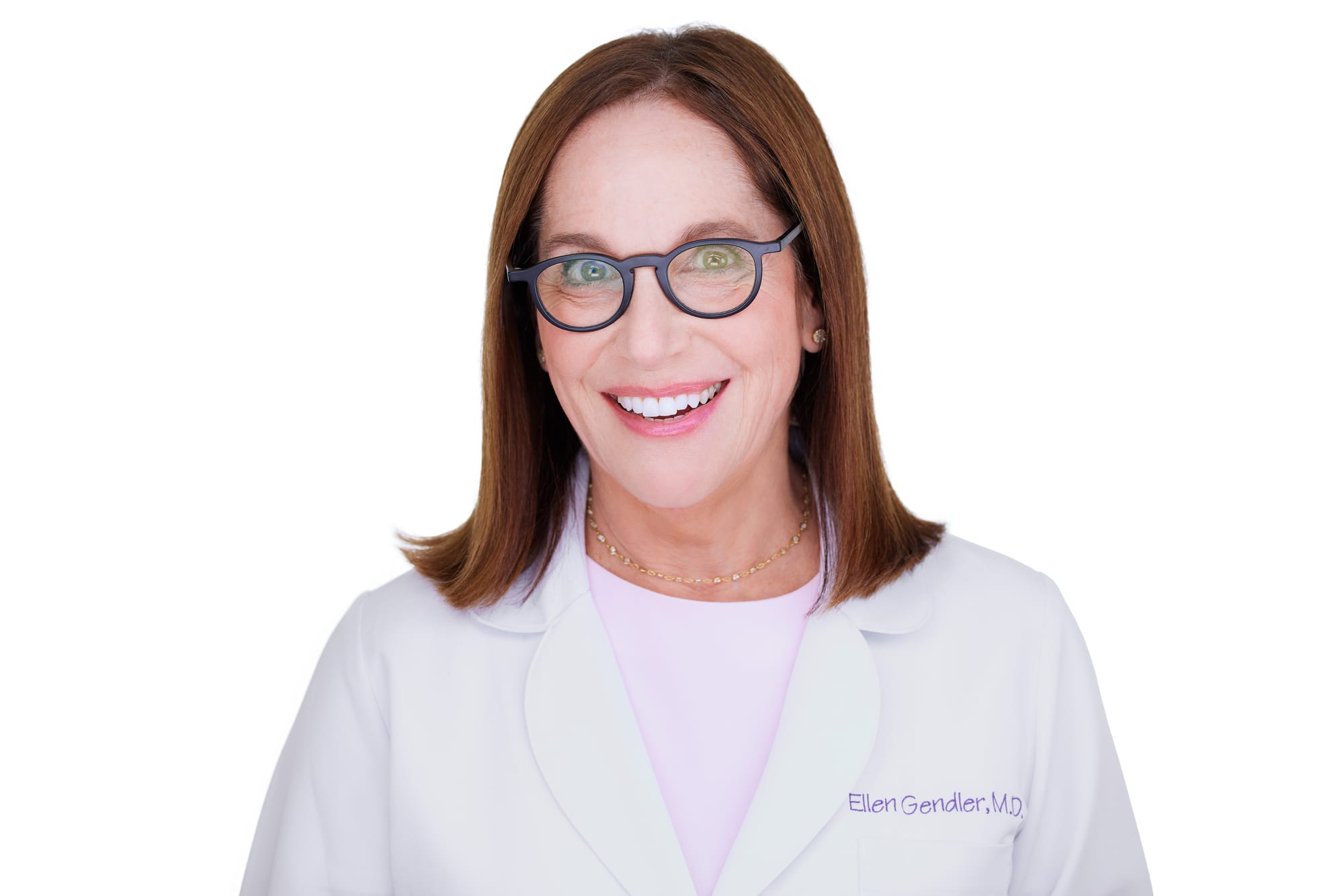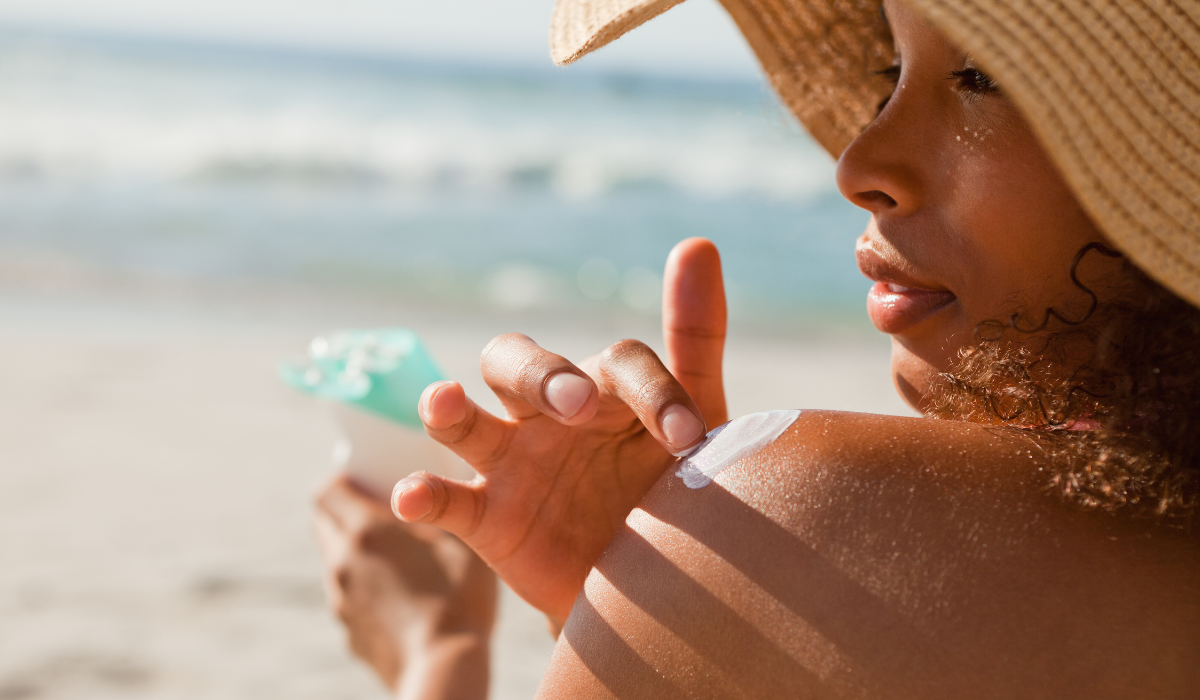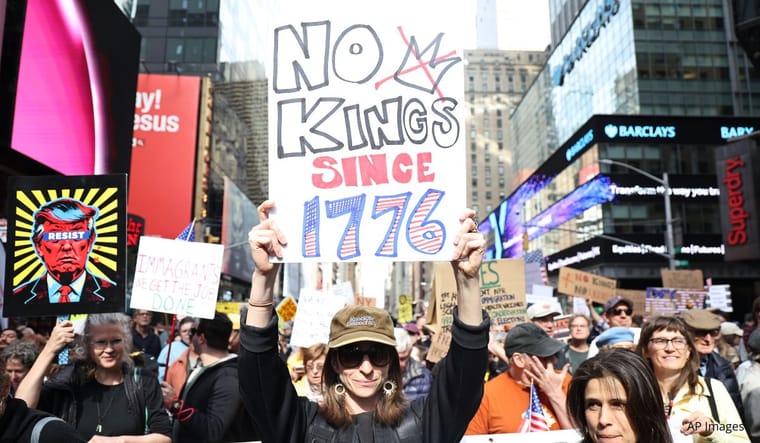A Top Dermatologist on the Sunscreen Myths All of Us Believe—and the Truth You Need This Summer
Until a couple years ago, Ellen Gendler, MD, was never really on social media. Friends tried to encourage her to share her expertise. After all, as one of New York City’s top dermatologists, Dr. Gendler has the inside scoop on everything related to skin health.
But then, after Dr. Gendler had back surgery and was recuperating in the summertime—unable to play tennis and do her usual activities—she started scrolling through her social media feeds and was shocked by the misinformation she found.
“One night I couldn’t sleep and I thought, ‘I have nothing else to do, let me make a post about what I know about sunscreen,’” she says. The post got a lot of likes and shares—and Dr. Gendler has been on a mission to spread the evidence-based truth about all things dermatology on her platforms ever since.
Now that summer’s in full swing, we asked Dr. Gendler to bust some of the biggest myths about sunscreen, fill us in on her best tips for maximizing sun protection, explain why she uses a little vaginal estrogen cream under her eyes (yes, you read that right!), and more.
A CONVERSATION WITH ELLEN GENDLER, MD
What are the different types of sunscreens, and how does each work?
There are two different types of sunscreens: mineral and chemical. Mineral sunscreens include ingredients like zinc oxide and titanium dioxide; chemical sunscreens here in the U.S. include ingredients such as avobenzone, octinoxate, octisalate, homosalate, and many others. In Europe, there are other chemical sunscreen ingredients that are not FDA-approved and therefore not available in products manufactured in the U.S..
So, what’s the difference between the two? Many people—even dermatologists—continue to believe that mineral sunscreens are sun blocks, meaning they completely block the sun. But this is a misconception. In fact, the FDA banned the term “sunblock” in 2011.
Mineral sunscreens don't work very differently from chemical sunscreens. All sunscreens absorb ultraviolet light and dissipate it as heat to take the effects off the skin, and they work by reflecting some light as well. It’s a myth that mineral sunscreens act as an actual physical barrier to sunlight. If you were to apply a 100 percent zinc oxide paste—something similar to a baby’s diaper rash ointment—that would probably create a complete block of UV light. But no one is going to do that, right?
However, while mineral sunscreens protect against both ultraviolet B (or UVB, the ultraviolet rays that burn your skin) and ultraviolet A (or UVA, known as the tanning rays), they do not protect against either as effectively as good chemical sunscreens unless they are somewhat thick and chalky. As I mentioned, here in the U.S., we have limited chemical sunscreen filters for UVA, while Europe and Asia have a variety of excellent and safe UVA filters. Hopefully this will change for us in the U.S. in the next few years.
Most of us have heard the term “broad spectrum” sunscreen but don’t exactly know what it means. Can you explain?
Quality sunscreen must have broad-spectrum coverage for two types of ultraviolet wavelengths: UVA and UVB, both of which contribute to sun damage. A bonus is if a sunscreen offers protection from visible light, which is the light you can see—both from the sun and computer screens—and contributes significantly to pigmentation on the skin. In the U.S., this visible light protection generally comes in the form of tinted sunscreens, which use iron oxides to shield against visible light.
In the U.S., all available ingredients that protect against UVB rays are approved for sunscreens. When you apply standard U.S. sunscreens correctly, you should not get a sunburn.
However, the only approved chemical sunscreen ingredient that shields against UVA rays in the U.S. is avobenzone, which covers only a limited range of UVA and, because it is unstable in the sun, it requires other ingredients to stabilize it. This is why even if you use a broad-spectrum sunscreen made in the U.S., you’ll likely still get tan. It’s because your UVA protection isn’t protecting you from the full gamut of UVA wavelengths, which penetrate deeper than UVB and contribute more in the long run to skin aging and to the formation of pre-cancers and skin cancers.
In Europe and Asia, the more complete UVA-blocking ingredients are approved and widely available. My favorite sunscreen is Anthelios UVMune 400 from LaRoche Posay (from Europe, so buyer beware!).
What’s your advice for maximizing sun protection?
If you go to Europe, Asia, Mexico, or South America, buy good sunscreen. If you know somebody who’s going, tell them, “Instead of bringing me back a scarf, bring me two tubes of sunscreen!”
If you can’t get your hands on the better sunscreens from these countries, apply a tinted mineral sunscreen over your chemical sunscreen.
And make sure you use enough sunscreen and that you reapply it—often! If you put sunscreen on at 8 a.m., by noon it’s as if you don’t have any sunscreen on. You need to reapply sunscreen every couple of hours when you’re outdoors.
And if you’re using sunscreen and still getting a tan, you’re not adequately protecting your skin from UVA rays. Any sign of a tan is bad.
What do you say to people who argue that they need unprotected sun exposure to make enough vitamin D?
Number one, you can get your vitamin D in a capsule.
Number two, the amount of sun exposure you need to get a requisite amount of vitamin D is small. When you put sunscreen on, you're likely not covering yourself head-to-toe. Your neck and hands, for example, are likely exposed, and you’ll absorb enough ultraviolet B to get your Vitamin D.
But if you are one of those people who feels that you are deprived of vitamin D because you never get unprotected sun exposure, take a pill. It really is one of the things you can replace quite simply.
The bottom line: It’s a trade-off. You can either risk getting skin cancer or unwanted pigment and skin aging due to not wearing sunscreen, or you can take a little pill in the morning. I’d vote for the pill.
You say DNA enzymes should be an integral part of a skincare routines, yet most of us haven’t heard about them. What are they?
In 2015, the Nobel prize was awarded to scientists who discovered DNA enzymes present in plants and bacteria, and which are now used as ingredients you can apply topically to the skin that work to help repair the damage done by the sun. These DNA enzymes have been shown to diminish pre-cancers and non-melanoma skin cancers by almost 30 percent. I don’t understand why more people aren’t clamoring to use them!
(To hear Dr. Gendler talk about DNA enzymes and recommend some of her favorite DNA repair products, click here.)
You’re also a proponent of women putting a little topical estrogen on certain areas of the face starting in our 40s. How does this work?
There are quite a few studies showing the use of estrogen topically can be very helpful to the skin in terms of thickness. Is it the Holy Grail? I would say no. But just like vaginal estrogen has been shown to thicken the vaginal epithelium and help women in perimenopause who have thinning skin that can lead to urogenital problems, it may also help with other areas of thinning skin, such as under your eyes, under your eyebrows, and on the backs of your hands—and it can help the appearance of facial skin in general.
I started using topical vaginal estrogen on the area under my eyes about 20 years ago—just a tiny bit—and I saw a clear benefit. I've been prescribing it to patients for that long as well.
Your social media accounts are an education on skin health, and especially sun protection. Why are you on a mission to correct all the misinformation that’s out there on the topic of sunscreen?
Honestly, because it has disturbed me for 25 years now that there are better chemical sunscreens available in Europe than in the U.S.
I also find it really discouraging that many dermatologists, who should be the leaders in this space, are not aware of the deficiencies in our sunscreen offerings. Chemical formulators often know way more about sunscreen ingredients than we do as doctors, and this should not be the case!
You now have hundreds of thousands of followers and your videos are liked and shared by so many. Why do you think you’ve seen such a response to your posts?
I think it’s because I speak the truth and I speak from the heart, based on 35 years of practicing dermatology. And I’m not sponsored by any company, nor do I get money every time someone purchases a skin care product after hearing about it on my social media account. When I see dermatologists receiving pennies for having followers buy skincare products on Sephora, Amazon, or elsewhere, it makes me cringe. Literally.

Dr. Ellen Gendler is a board-certified dermatologist in New York City and clinical associate professor of dermatology at NYU Langone Medical Center. To learn more, visit this website or follow Dr. Gendler on Instagram.
Please note that we may receive affiliate commissions from the sales of linked products.



